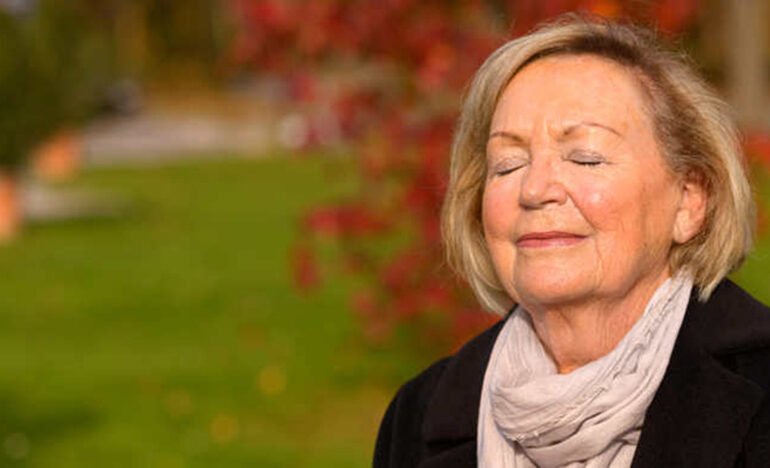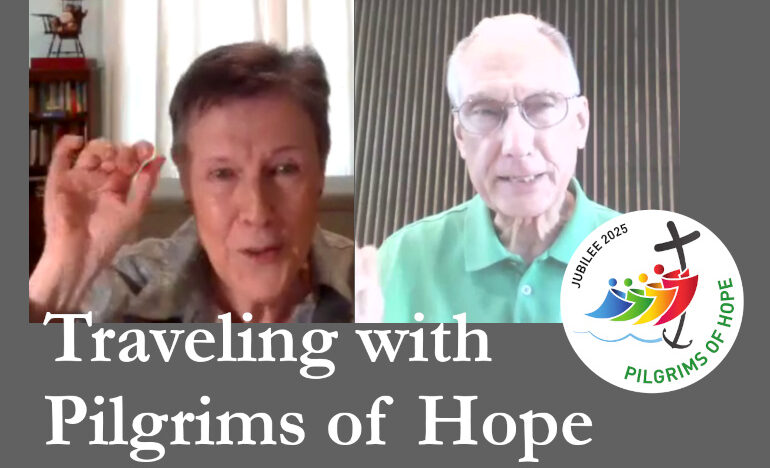The Fruits of Contemplation

By Kathy Keary
This is Part 4 of a 4 Part series. Read all the articles here.
I answered the call to divine communion through centering prayer nine years ago. Ever since, I have heard and accepted the invitation that lures me into the depths of my soul to spend sacred time with my Maker. The fruits of this practice have been life giving.
I distinctly recall that about six months after incorporating this practice into my day, I noticed a shift in my inner world. I felt a calm — a sense of peace that found its way into my response to life.
Richard Rohr speaks of this type of peace in his book, What the Mystics Know: Seven Pathways to Your Deeper Self:
“That’s why I have to go into the wilderness, where I let God call me by name to a deeper place. This is the peace that the world can’t give. But I promise you that it’s also the peace that the world can no longer take from you.”
Along the way, I developed an undercurrent of both love and joy on a palpable level. It’s like a thread that runs through my being sometimes in an overwhelming way and at other times, in a more subtle manner.
St. Paul tells us in his letter to the Galatians that such things as love, joy, peace, gentleness, faithfulness, generosity, self-control, patience, and kindness are fruits of the Spirit. It’s not surprising then that practitioners of contemplative prayer exhibit these characteristics. After all contemplative prayer is all about communing with the Indwelling Spirit of God.
As mentioned in our previous articles, in centering prayer we consent to the presence and action of God in the depths of our soul. I once heard God’s action referred to as the Holy One sanding our rough edges gradually shaping us into the person we were created to be. Jesus is clear throughout the Gospels that there is a self of whom we need to let go and a self we need to find. “For whoever wishes to save his life will lose it, but whoever loses his life for my sake and that of the gospel will save it” (Mark 8:35).
Richard Rohr speaks of the emergence of the true self in his book, Immortal Diamond:
You (and every other created thing) begins with a divine DNA, an inner destiny as it were, an absolute core that knows the truth about you, a blueprint tucked away in the cellar of your being, an imago Dei (image of God) that begs to be allowed, to be fulfilled and to show itself.
The practice of centering prayer not only strengthens a sense of union with God but also with the children of God without exception. Henri Nouwen speaks of this inclusivity in his book, Spiritual Formation, Following the Movements of the Spirit: “Intimacy with God and solidarity with all people are two aspect of the indwelling presence of God. These two realities can never be separated.”
Our union with the divine and the people of God calls us to loving action to lift up our brother and sisters who are in pain. Thomas Keating in his book, Heart of the World elaborates:
“Interior experience is geared to action. It is designed to soften up our self-centered dispositions, to deliver us from what is compulsive in our motivation, and to open us up completely to God and to the genuine service of others.”
The sense of unity as a product of contemplative prayer manifest itself in a love for God’s creation as well. The divine is revealed in the setting sun, spring flowers, the majesty of mountains, and the roar of the ocean. Care for the environment is often a byproduct of a deeper appreciation for the work of God’s hands fostered in contemplation.
When I conclude a session of centering prayer but before I open my eyes, I imagine taking the peaceful presence I am experiencing into the various activities I have planned for the day. It acknowledges my awareness of God’s presence with me throughout the day and marks all of life as sacred.
When I conclude a session of centering prayer but before I open my eyes, I imagine taking the peaceful presence I am experiencing into the various activities I have planned for the day.
I attribute a sense of healing and wellbeing to the practice of centering prayer. It reminds me of the woman who only had to touch Jesus’ garment to be healed. Jesus said to her, “Daughter, your faith has saved you.” Contemplative practice opens our fragile souls to be filled with the grace and healing touch of our God.
I have also found that the practice of centering prayer has increased my ability to be present in the moment. This can be very helpful in tuning out obsessive inner voices of past regrets or future worries in order to embrace the beauty that is right in front of me. I find this to be a healthier way of being in the world.
The fruits of contemplative prayer are indeed treasures that enrich our lives. It is a dying to self as we bow to the divine presence and action in the depths of our being. But by dying, we are born into the fullness of God’s love and compassion and are summoned to extend those gifts to others. We are called to be love, to be peace, to be joy in our world.
Note: New articles in this series will be posted to the website every Monday and Wednesday. The full series can be found here: An Invitation to Something New: The Contemplative Life. On Thursday’s we’ll send an email to remind you of the articles
[Kathy Keary, a Precious Blood Companion and spiritual director, holds a master’s degree in theological studies and is a graduate of the Atchison Benedictine’s Sophia Center’s Souljourners Program, an intense study of spirituality and spiritual direction. Kathy believes that the divine is present and active in all of life and encourages others to be awakened to the God in all including the divine within. She enjoys accompanying others on their journey to wholeness discovering the person they were created to be.]
Image above © Mheim301165 | Dreamstime.com
Related

Pilgrims of Hope, Episode 6: Walking with Cancer Survivors
Hosted by Fr. Ron Will, C.PP.S.
We are talking with people who find hope amid difficult circumstances or bring hope to others. In this episode, Kathy Keary talks about how centering prayer, journaling and other spiritual practices helped her cope with two life threatening health issues.

The Rollercoaster Torture
An Assembling God’s Puzzle video
By Fr. Garry Richmeier, C.PP.S.
Life is full of ups and downs, like a roller coaster, and that fact is a piece of life’s puzzle that we must deal with. Depending on how we deal with it, it can be torture, or it can be simply another difficult aspect of life to be navigated. How do we avoid the torture?
Categories
Assembling God's Puzzle Coffee with Padre Cooking & Spirituality Encounters of the 4th Kind Family Matters Reflections on the Eucharsitic Prayers Spiritual Resources Taize Prayers The Contemplative Life Traveling with Pilgrims of Hope Uncategorized Videos Week of Prayer for Uhristian Unity When you need a little help
